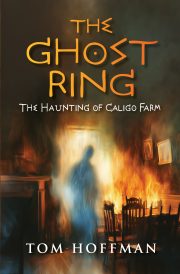Developing Games and Developing as a Parent
by Karlyn Meyer
Note: This article first appeared in The Bulletin #216 in October 2021.
I started making my first video game the week I found out I was pregnant. Games featured heavily in my relationship with my partner; we had played video games together in college, and even got engaged while doing so, and we began taking game development and analysis more seriously once we moved to Chicago and began law school together. In the early days of this new life, we had a lot of newlywed time and wonder, but not much cash. We loved analyzing what we played together and workshopping things we wanted to create. We’d play published titles, preview new works at gaming conventions, and develop our own. Our first forays into game development were both rudimentary and thrilling—we’d take a deck of cards and ask, how can we make this fun? Challenging? Innovative? Design challenges like this got us seeing games everywhere and daydreaming mechanics we’d never seen. Eventually we would keep a notebook of potential ideas. Brainstorming ways to create something unique and engaging was a sweet aspect of our new lives together.
Our dream was to make games, easily and often, with increasing competence. We each had concepts we were eager to bring to the world, but took to heart a piece of conventional game dev wisdom: Don’t make your dream game your first. So with our notebook filled with the ideas that we had collaborated on in our first years together, we took a few online tutorials and began working on our First Real Game in earnest. This game would be a love letter to our new home town, using public domain photography to immerse the player in Chicago’s 1893 World’s Fair.
Our plan was airtight. We would spend our winter holidays at his parents’ house with two laptops, free software, enthusiasm, and an idea. We treated this like a self-created game jam—an exercise in creating one from scratch in a short time period with only the skills and resources we had. We had to start somewhere, and this was it. And we did indeed start the project. But the other thing we started was the process of becoming parents.
The timing was improbable, like the pacing in a sitcom: I took a pregnancy test in my in-laws’ bathroom, and within 24 hours had the morning sickness that would continue well past my second trimester. This new development—a welcome and exciting one, if not disruptive—ended that of our game.
We have yet to return to that project. But we had no doubt we would return to gaming, which has loomed large for me since I can remember. I was a child in the early days of home computers, in a family that could afford one but seldom paid for games. Instead, we got bootlegs and knock-offs on floppy disks with no instruction manuals. Figuring out what games were supposed to be about and how they worked was a part of my experience from the very beginning.
My pregnancy was intense—wonderful and traumatic in ways I can’t further summarize. Also, it was a period during which I learned to play tabletop RPGs, attended fewer gaming conventions, and played more video games that I could complete in an afternoon. Then, after hours of labor and an emergency C-section, came “G.” Next came the exhaustion, fear, and doubt that accompanied her first few weeks. In my prenatal twenties, I had pictured myself becoming a very hip new mom who wore a gaming headset while snuggling her newborn—physically present yet undisturbed by the inevitable and inexplicable cries. I knew I would already be up at all hours and imagined that getting through some late-night campaigns could be a nice bright spot to her infancy. But that’s not how it went.
I don’t know how I could have prepared for the level of worry and stress that we experienced while learning to care for our child, whom we loved in an abstract sense, but at such an early stage felt at times like an alien, or a vital machine we were entrusted to keep running but had never been taught how to operate. All of our plans for parenthood felt wholly theoretical; there were some basic things we knew we must or must not do, and everything else was trial and error. And despite all the advice we’d sought, we had never heard how uniquely lonely and befuddling this period would be. And that made it even lonelier.
I have always believed in the power of games to create empathy. My partner and I didn’t know how to communicate our struggle to our friends, from whom we felt so deeply isolated. And we wanted to help others who were in our same position. What we were going through was hard to admit and hard to articulate even to ourselves and each other. So rather than immerse myself in games during her first weeks of life, I used the metaphor of game mechanics and narrative to help process what we were going through as a couple. Through this shared language we were able to tease out the nuance that helped us grapple with our feelings.
The game idea that emerged from those first weeks of parenthood places the player alone in a small, dark room with a large, loud machine. Sometimes it hums melodiously; sometimes it screeches, sparks, and jerks so intensely as to suggest it will explode. The player’s sole task is to maintain this machine, but the only available information is in scattered pages from an instruction manual, covered with dozens of previous operators’ conflicting hand-scribbled notes. As you play, some techniques may seem effective, but with no discernible connection between the player’s actions and the machine’s response. In the end, the only way to win is to stay calm and keep trying.
For audio, we recorded and modulated G’s cries, and eventually coos and babbles. But this concept was too personal and important to be our First Real Game, so it joined others in the notebook. G grew from newborn to baby. I went back to work, now the sole and primary earner, and my partner stayed home with G and learned more code.
Once G was a toddler, everything was color and shapes and songs and wonder. We would project vibrant digital games onto a white wall, and let her hold the controller and participate. One thing we had anticipated already was a shift in genres my partner and I would play; the survival horror and cooperative shooters would cede to platformers, puzzles, and bloodless narrative adventures. But more often than that, we just played fewer video games.
At the same time, we were always playing with G. Storytelling, make-believe, playground games, and so much general silliness. And once she was old enough to talk to us, things got cool.
When G was three, my partner started making his first full-length video game, which has since gone on to a successful commercial release. But we still wanted to make something complete, together. So we joined up with our neighbor and friend, an artist who loves G as well, and participated in a Ludum Dare, a game jam where participants had 72 hours to create a game based on that year’s theme: “running out of power.”
We went in with reasonable expectations, suspecting we would need to quit early because G would need attention. But instead, G made the game with us. This was an autobiographical branching storytelling game where the player must read a bedtime story to a child, choosing the speech options that will put the child to sleep, but not the reader. My partner coded, our neighbor created the art, and I wrote the dialogue. The writing came from conversations with and about G, with some sections of internal dialogue reflecting on how much I love her. I recorded music on her toy keyboard, and recorded her speaking for dialogue. In a treat to all of us, she ad-libbed a song on the ukulele for our closing credits. The game, a small love letter to G at age three, is called Soporific: A Bedtime Story.
Soporific changed everything. Then, G was more than an inspiration; she became a teammate, too. She also was a player in her own right, with her own tastes. She loved playing the phonics games on my phone and replaying cooperative board games far past the adults’ point of disinterest, all made delightful by her excitement and the fact that she was independent enough to have preferences.
And with her rich imagination, she was creating stories and games as often as we were. Give her anything—a pen and paper, a sidewalk with a grid pattern, a deck of cards—and a willing participant, and we’d have a game. They didn’t always make sense, and they weren’t always objectively fun; but they were always worthwhile; time with her is always well spent. And the games she creates continue to help us get inside her head and understand what makes her anxious, what she values, and what interests her.
Games also help her know she fits in with us, as the only child of two analytical parents with years of shared history, background information, and general understanding of the world. When G plays games with us, the silly moments we make together become our inside jokes and shared references.
My partner and I also have been using games as teaching tools in many ways—initially for practicing perseverance, pattern recognition, situational awareness, teamwork, and attention to detail. And now that she’s older, we also seek out games that provide historical, scientific, and cultural edification. While this has always been important to me, I’m now deliberate about putting it into practice. As a solo player, I could play ridiculous things for escapism, knowing that I can contextualize and sort the good from the bad. But for G, the media she consumes normalizes behavior and helps her order her world, and it’s worth it to do better.
We continue to use games for media literacy and critique, encouraging her to think critically about how and by whom games are created, what each game’s design suggests for her to do or feel, and why. And as my partner approached the release of his published title, G was an amazing playtester, approaching things from angles we never expected, and influenced the final game in countless ways.
But the importance of games in our household stands independent of any finished product. What has made games invaluable and profound has been their service as relational tools between us.
G is now seven, and her gaming preferences have continued to expand. She became tirelessly interested in chess, turn-based strategy, and sims, and loves room escapes as much as I do. Along the way, we’ve been thrilled to see her deepen her patience, focus, passion, and perspective. And from here, her love of games may continue to grow and change; but she also eventually may stop consuming them in this way. She may stop playing them with me.
Crucial to my role as a parent will be to embrace who G is, even as this changes from my idea of who I expected G to become. And I know that our future relationship will be possible in part because we daydream, process, express, learn, persevere, and play together. So much of loving someone is taking the time to recognize what they notice, value, and want to communicate. Games have become central to the ways my daughter and I have come to love each other. Of the many things I expected games to be in my life, this has been the greatest surprise.
 Karlyn Ruth Meyer is a former singer-songwriter with a career in legal education. You can find her writing in Lady Science, Uncanny Magazine, legal publications, and small video games. She spends her dwindling free time as a community organizer, volunteer, and speaker. Other passions include friendship and learning new things with her endlessly curious kid. She tweets @karlyn_darlin.
Karlyn Ruth Meyer is a former singer-songwriter with a career in legal education. You can find her writing in Lady Science, Uncanny Magazine, legal publications, and small video games. She spends her dwindling free time as a community organizer, volunteer, and speaker. Other passions include friendship and learning new things with her endlessly curious kid. She tweets @karlyn_darlin.


